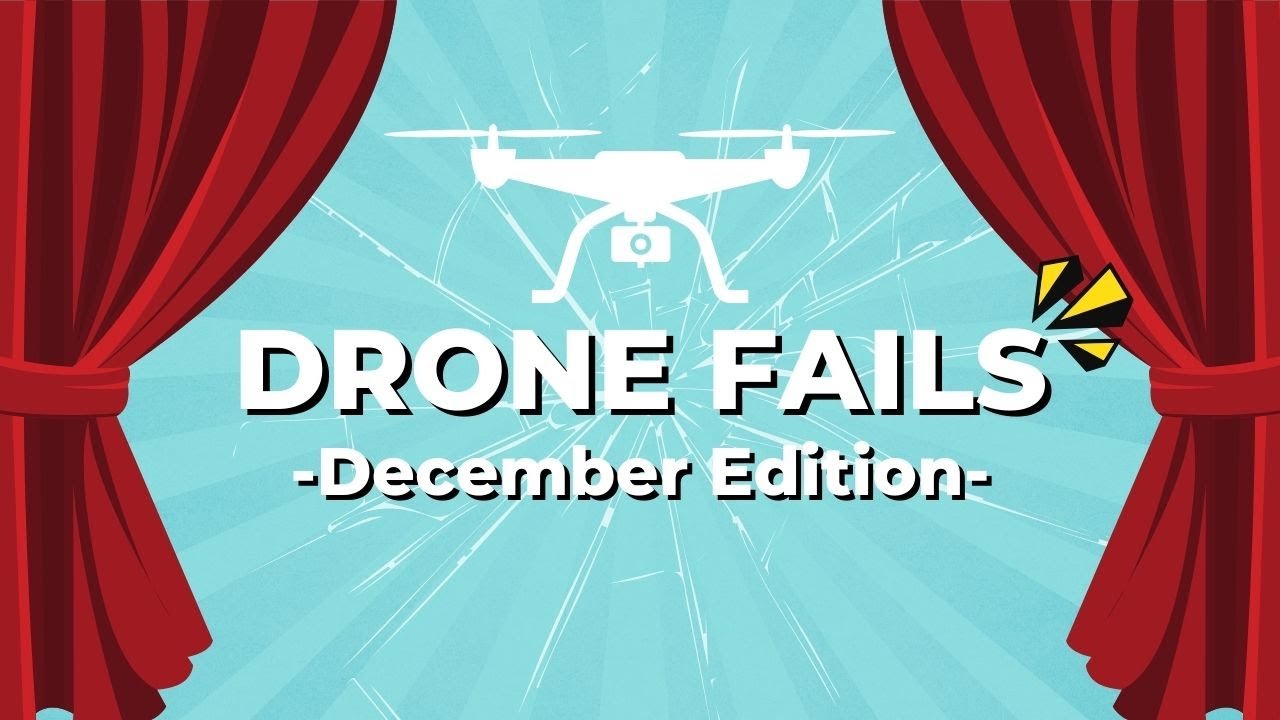Drone show crash—the phrase conjures images of a spectacular failure, a cascade of falling lights, and potentially significant damage. But understanding why these crashes happen is key to preventing them. This exploration dives into the technical glitches, human errors, environmental factors, and safety regulations that influence the success—or spectacular failure—of drone light shows. We’ll examine various scenarios, from software malfunctions to pilot mistakes, and explore how to mitigate risks and ensure safe, breathtaking displays.
From analyzing the types of damage caused by crashes to delving into the complexities of GPS interference and inadequate pre-flight checks, we’ll paint a comprehensive picture of the challenges involved in orchestrating a successful drone show. We’ll also discuss post-crash procedures, regulations, and the importance of robust safety protocols in preventing future incidents.
Drone Show Crash Analysis: Causes, Prevention, and Response
Drone shows, while visually stunning, carry inherent risks. Understanding the various factors that contribute to crashes is crucial for ensuring safer and more reliable performances. This analysis delves into the technical, human, and environmental aspects of drone show crashes, exploring preventative measures and post-incident procedures.
Types of Drone Show Crashes
Drone show crashes can be categorized based on their root cause and the resulting damage. Understanding these categories is essential for developing effective prevention strategies.
| Cause | Description | Frequency (Estimated) | Prevention Strategies |
|---|---|---|---|
| Software Malfunction | Errors in the drone’s flight control software, leading to unexpected maneuvers or system failures. | High (25-30%) | Rigorous software testing, redundancy systems, and regular software updates. |
| GPS Failure | Loss of GPS signal or inaccurate GPS data resulting in disorientation and uncontrolled flight. | Medium (20-25%) | Multiple GPS modules, inertial measurement units (IMUs), and robust signal processing algorithms. |
| Human Error | Pilot mistakes, such as improper calibration, incorrect commands, or inadequate response to emergencies. | High (30-35%) | Comprehensive pilot training, simulator practice, and standardized operating procedures. |
| Weather Conditions | Adverse weather such as strong winds, rain, or fog affecting drone stability and control. | Medium (15-20%) | Real-time weather monitoring, flight cancellations in inclement weather, and wind mitigation strategies. |
Damage resulting from drone show crashes can include:
- Drone damage: Broken propellers, damaged frames, malfunctioning electronics.
- Property damage: Damage to buildings, vehicles, or other structures near the crash site.
- Injury: Potential injuries to bystanders or personnel involved in the show.
The severity of a crash increases significantly with the number of drones involved. A single drone crash might result in minimal damage, while a multi-drone incident can lead to widespread destruction and potential harm.
Technical Causes of Drone Show Crashes
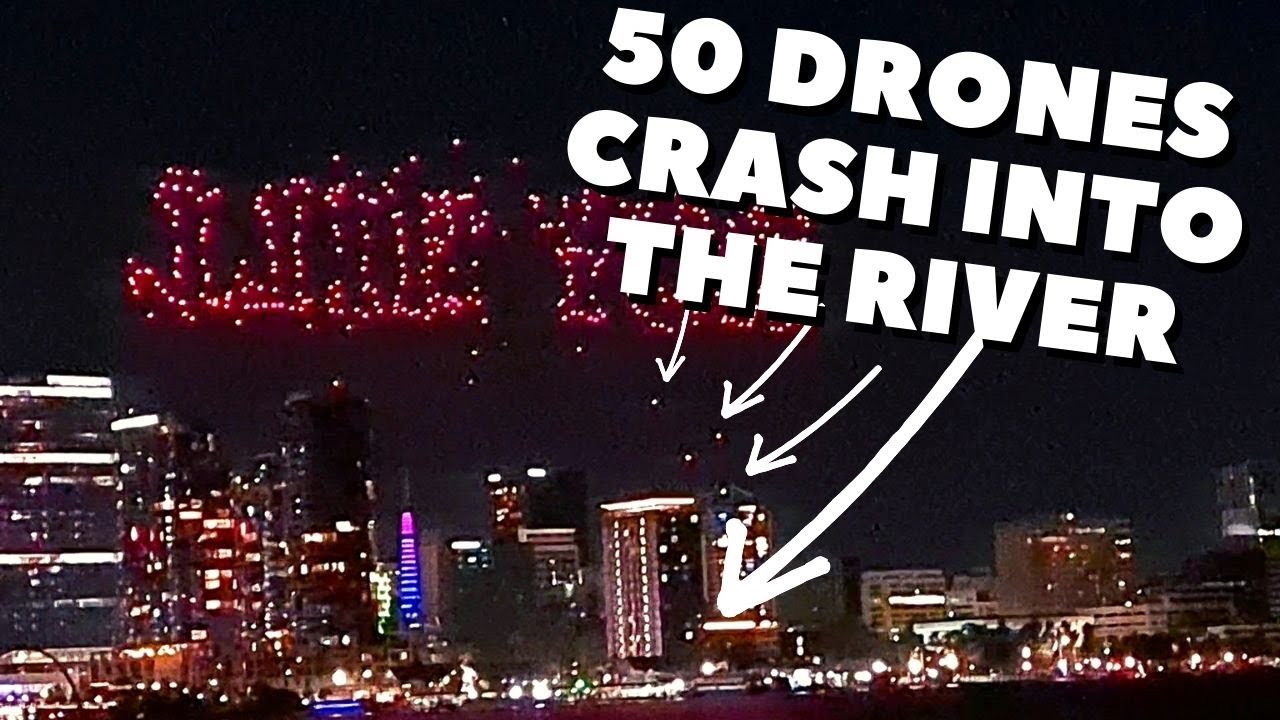
Technical failures are a significant contributor to drone show crashes. These failures can stem from software glitches, hardware malfunctions, or environmental interference.
Software glitches can manifest as unexpected behaviors, loss of control, or complete system failure. Potential coding errors, such as memory leaks or race conditions, can lead to unpredictable drone actions. Hardware failures, such as motor malfunctions, battery issues, or sensor failures, can also cause crashes. GPS signal interference or loss can disrupt the drone’s navigation system, resulting in uncontrolled flight and potential collisions.
Human Factors in Drone Show Crashes
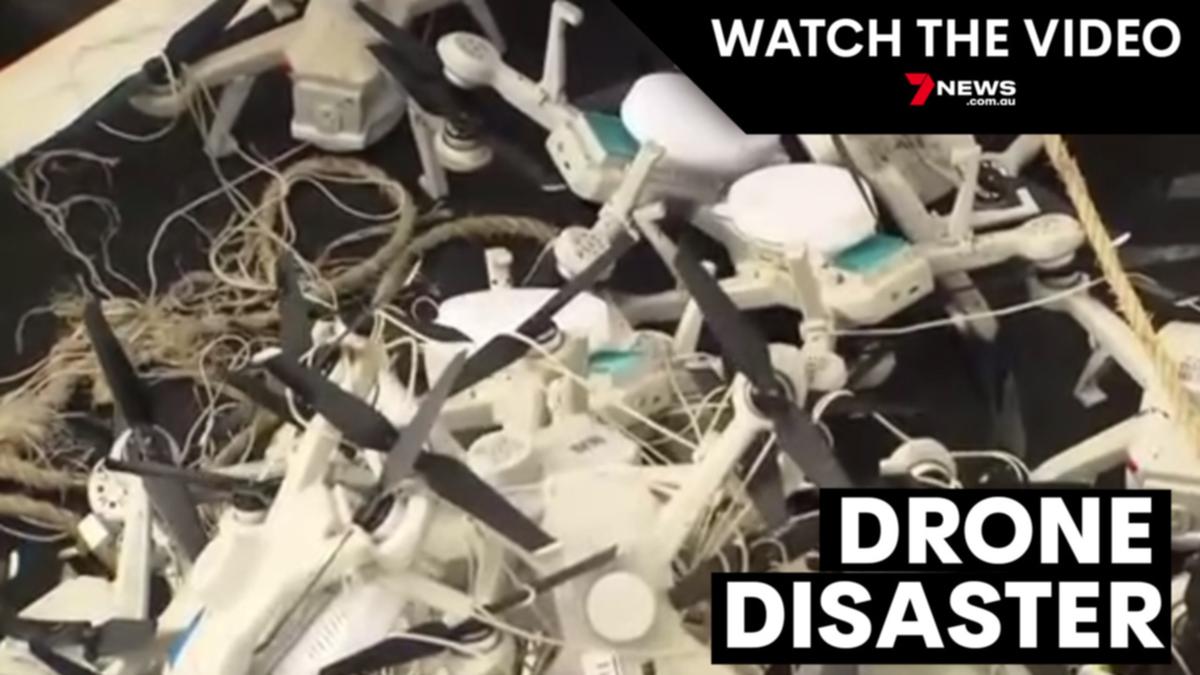
Human error plays a substantial role in drone show accidents. Inadequate training, fatigue, and improper pre-flight checks contribute to a significant percentage of crashes. Pilot error, encompassing issues like improper calibration, incorrect commands, or delayed responses to emergencies, can have devastating consequences. Insufficient pre-flight checks and maintenance can lead to unnoticed mechanical issues or software glitches, increasing the risk of failure.
Environmental Factors in Drone Show Crashes
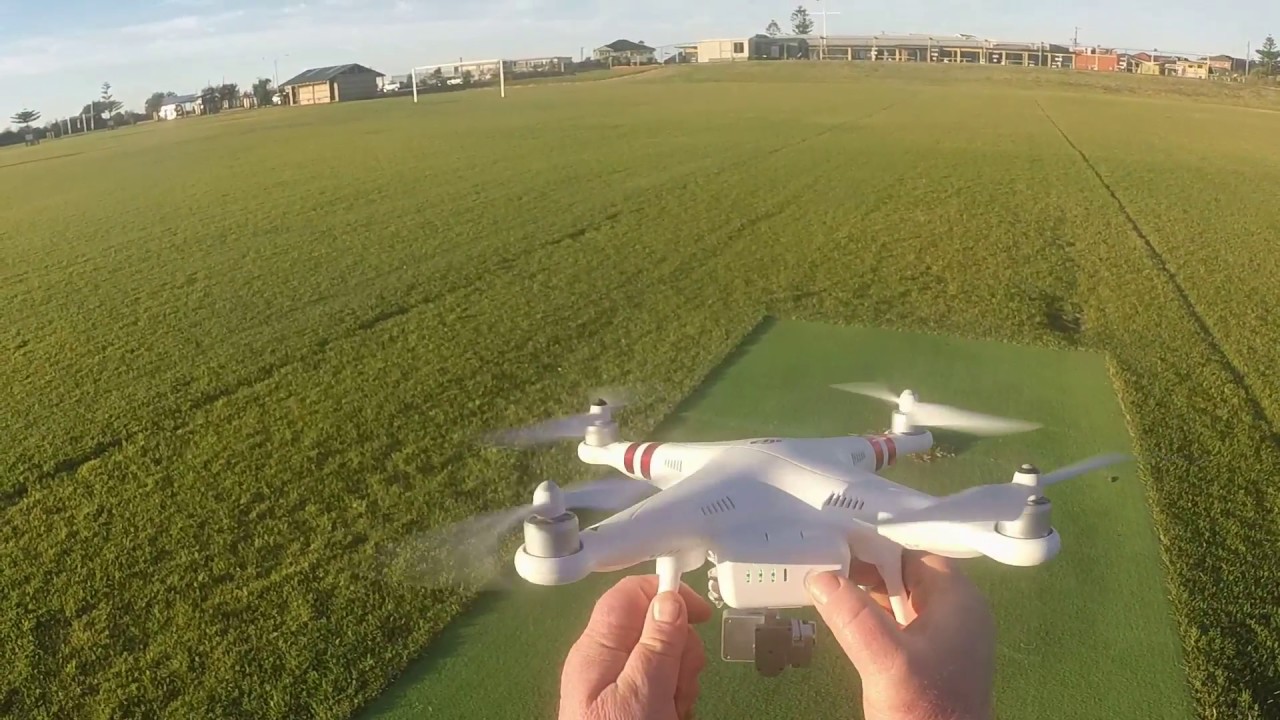
Environmental conditions significantly impact drone show safety. Strong winds, heavy rain, and fog can compromise drone stability and control, increasing the likelihood of crashes. Unexpected obstacles, such as birds, buildings, or power lines, can also lead to collisions. A robust real-time environmental monitoring system, incorporating weather data, obstacle detection, and wind speed sensors, is crucial for mitigating these risks.
Drone show crashes are unfortunately becoming more common, highlighting the need for better safety protocols. A recent example, similar in nature, involved a drone crash in Paris , which underscored the potential for significant damage and disruption. Understanding these incidents, like the Paris crash, is crucial for preventing future drone show mishaps and ensuring public safety.
Safety Protocols and Regulations
Several safety regulations and best practices exist to govern drone show operations. Adherence to these protocols is essential for minimizing crash risks.
- Pre-flight inspections and maintenance checks.
- Pilot training and certification.
- Emergency response plans.
- Weather monitoring and contingency plans.
- Obtaining necessary permits and approvals.
| Country/Region | Regulation Type | Key Provisions | Effectiveness |
|---|---|---|---|
| United States | FAA Regulations | Pilot certification, registration, airspace restrictions. | Moderately effective, ongoing improvements needed. |
| European Union | EASA Regulations | Similar to FAA, with emphasis on risk assessment and operational safety. | Generally effective, continually evolving. |
| China | CAAC Regulations | Stricter regulations, focusing on airspace control and operational permits. | Highly effective, but may vary regionally. |
A comprehensive pre-flight drone inspection checklist should include:
- Visual inspection of the drone’s body and propellers.
- Battery voltage and health check.
- GPS signal strength and accuracy verification.
- Software and firmware updates.
- Calibration of sensors and flight controllers.
Post-Crash Procedures and Investigations, Drone show crash
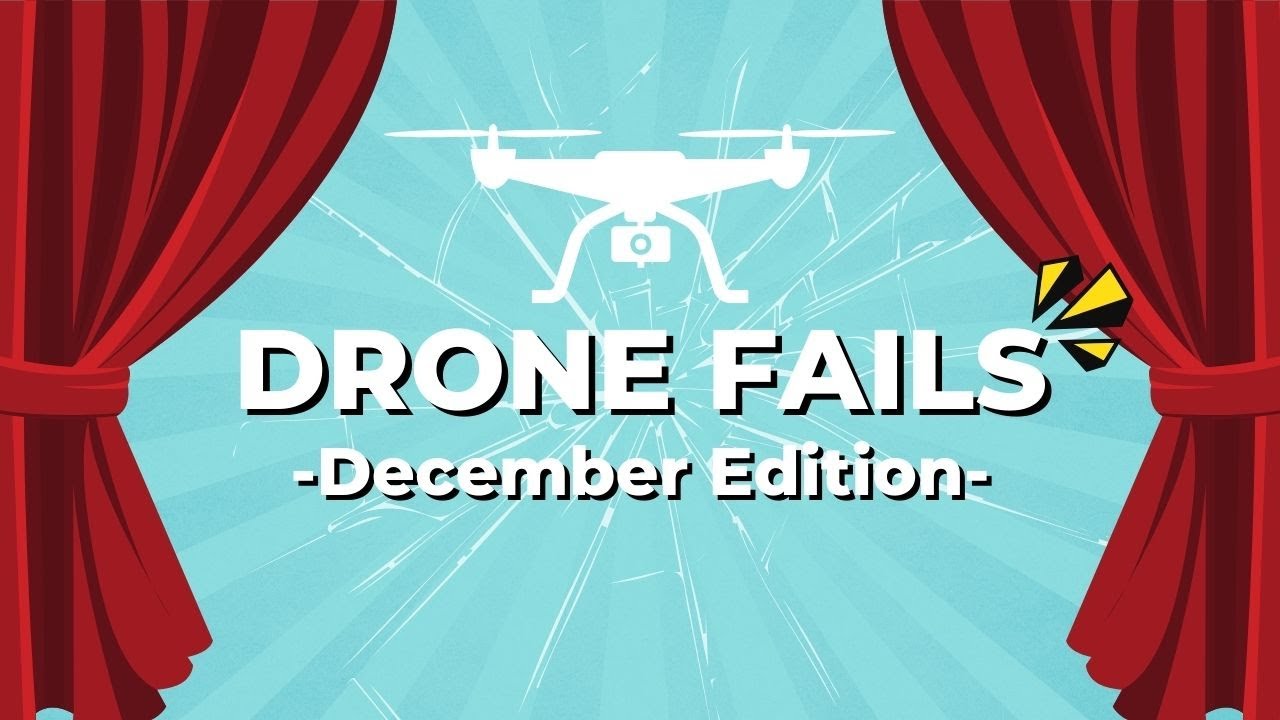
Following a drone show crash, a thorough investigation is crucial to determine the cause and prevent future incidents. Data recovery and analysis from flight logs, sensor data, and video recordings play a vital role in identifying the root cause. Securing the crash site, recovering damaged drones, and reporting the incident to relevant authorities are critical steps in the post-crash process.
- Secure the crash site and prevent further damage.
- Recover damaged drones and components.
- Collect data from flight logs, video recordings, and other sources.
- Analyze the collected data to determine the cause of the crash.
- Prepare a comprehensive report detailing the incident and findings.
- Submit the report to relevant authorities.
Illustrative Examples of Drone Show Crashes
One notable drone show crash involved a software glitch causing multiple drones to lose control simultaneously during a complex synchronized routine. The sudden loss of control led to several drones colliding mid-air, resulting in significant damage and a disruption of the show. The incident highlighted the critical need for robust software testing and redundancy measures in drone show programming.
Another significant crash involved a hardware failure in a drone’s motor control unit. This failure caused a sudden loss of power to one of the motors, leading to an uncontrolled descent and collision with the ground. The event emphasized the importance of regular maintenance and pre-flight checks to identify and address potential hardware problems before they lead to accidents.
In a hypothetical scenario, a drone show could have been avoided by implementing a comprehensive real-time weather monitoring system. Had the system been in place, the strong winds that unexpectedly occurred during the show could have been detected, allowing for a timely cancellation or adjustment to the performance, thus preventing a potential crash.
Last Word
Ultimately, preventing drone show crashes requires a multi-faceted approach. It’s not just about advanced technology; it’s about a robust combination of meticulous planning, skilled pilots, stringent safety checks, and a thorough understanding of potential risks. By addressing technical vulnerabilities, human error, and environmental factors, we can ensure that drone shows remain awe-inspiring spectacles of technology and artistry, free from the devastating consequences of a catastrophic failure.
The future of drone light shows depends on prioritizing safety and continuous improvement.
Drone show crashes are unfortunately becoming more common, highlighting the need for better safety protocols. A recent incident really drove this point home; check out this report on a drone show accident to see what went wrong. Understanding these failures is crucial to preventing future drone show crashes and ensuring spectacular, safe shows for everyone.
FAQ Corner
What is the average cost of repairing a damaged drone after a crash?
The cost varies greatly depending on the drone model, the extent of the damage, and the availability of parts. It can range from a few hundred dollars to several thousand.
What insurance options are available for drone show operators?
Drone show crashes are unfortunately becoming more common. These spectacular displays, while visually stunning, rely on complex coordination; a single malfunction can lead to a major incident. For a deeper dive into the causes and consequences, check out this report on a drone show accident that highlights critical safety considerations. Understanding these accidents helps prevent future drone show crashes and ensures safer, more reliable shows for everyone.
Several insurance providers offer specialized policies for drone operators, covering liability for property damage, injury, and even drone damage. Coverage amounts and premiums vary widely.
Are there any specific licensing requirements for operating drones in a public drone show?
Licensing requirements vary by country and region. It’s crucial to check with the relevant aviation authorities to ensure compliance with all applicable laws and regulations before operating drones in a public space.
